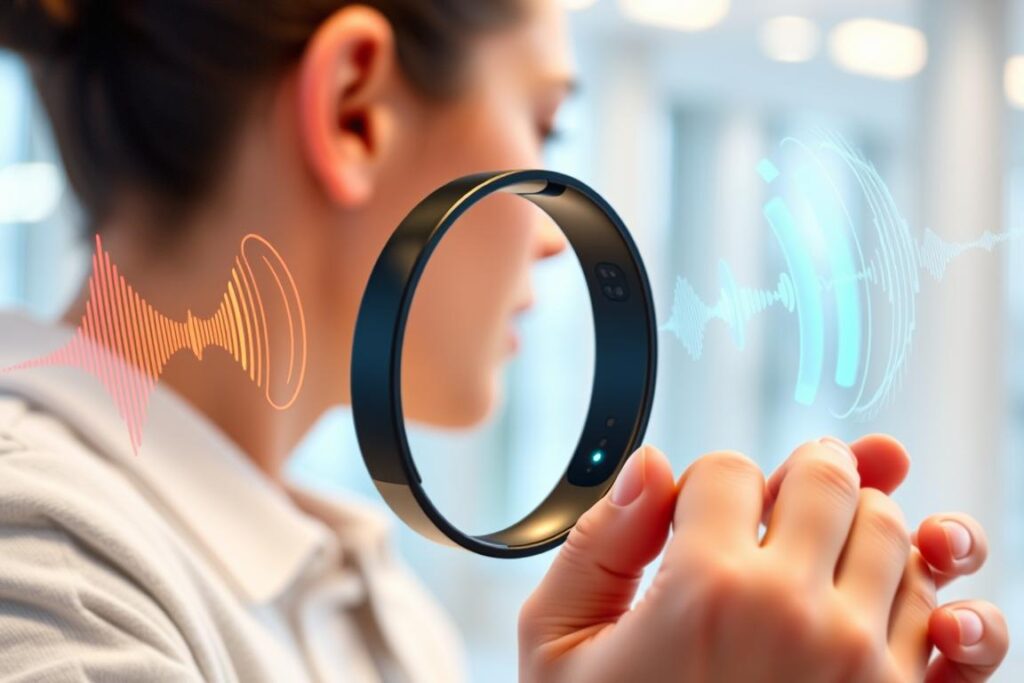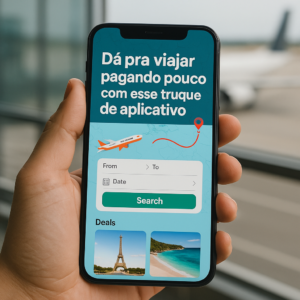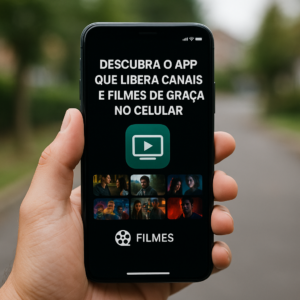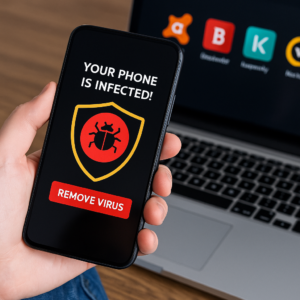Wearable Technologies for Accessibility: Transforming Lives
Technology can change lives in incredible ways. wearable technologies for accessibility are an example of this. They help people with visual and hearing impairments to interact better with the world.
These wearable technologies improve the lives of people with disabilities. They allow these people to feel more independent. This is possible thanks to real-time health monitoring and immediate feedback.
Furthermore, these devices can be customized for each person. This shows that the demand for affordable technology is growing. By 2025, the market for wearable technologies should reach 62 billion dollars.
To the wearable technologies for accessibility are essential for inclusion. They enable people with disabilities to live more independently. Artificial intelligence and robotics are making these technologies more effective.
It is important to understand how these technologies can change lives. They improve digital accessibility and the quality of life of people with disabilities.
The Impact of Wearable Technologies on Accessibility
THE technological innovation has changed the lives of many people with disabilities. They now have more freedom and quality of life. digital inclusion It is essential for these people to better integrate into society.
Assistive technologies are very important for accessibility. They help to overcome physical and social obstacles. With the wearable devices, people with disabilities have access to tools that greatly improve their lives.
- Navigation devices for visually impaired people
- Sign Language Translators
- Vibrating alert devices for people with hearing impairments
These technologies not only facilitate physical access, but also help with social inclusion. They allow people with disabilities to be an active part of society. With more innovation, we will see even more advances in accessibility and digital inclusion.
| Technology | Benefit |
|---|---|
| Navigation devices | Improves mobility and independence |
| Sign Language Translators | Facilitates communication and social interaction |
| Vibrating alert devices | Helps alert people with hearing impairments |
Top Wearable Devices in the Current Market
You wearable devices, or wearables, are increasingly popular. They offer innovative solutions for people with disabilities. These devices are becoming more sophisticated, improving accessibility for people with disabilities in areas such as health, education and communication.
Some of the main wearable devices in the market are:
- Smart glasses that help with navigation and reading texts
- Navigation devices, which facilitate movement in unfamiliar environments
- Tactile reading systems, which allow visually impaired people to read
These wearable devices have a huge impact on the lives of people with disabilities. They provide greater independence and autonomy. They are also useful for people without disabilities, helping to monitor their health and well-being.
As technology advances, new wearable devices are being developed. They promise to further improve accessibility for people with disabilities and the quality of life of all. The wearables are becoming essential in our daily lives. It is important to stay up to date with the latest trends and developments in this area.
Wearable Technologies for Visual Impairment
To the wearable technologies are changing the lives of people with visual impairments. They help increase independence and autonomy. These devices are made to meet the specific needs of these people.
Smart glasses are a great innovation for those with visual impairments. They allow people to read texts, recognize faces and identify products. In addition, there are navigation devices and tactile reading systems to help with mobility and interaction with the environment.
Smart Glasses and Navigation Devices
Smart glasses, such as the OrCam My Eye 2, allow you to read text at different speeds and in different languages. WeWalk’s smart cane, for example, uses ultrasonic sensors and Google Maps data to improve mobility.
These wearable technologies seek to provide digital accessibility and independence. With them, people with visual impairments can perform daily tasks more easily and independently.
Wearable technologies also improve digital accessibility in areas such as education and work. They allow people with visual impairments to access previously inaccessible information and resources.
| Technology | Description |
|---|---|
| Smart Glasses | Allows visually impaired people to read texts and recognize faces |
| Navigation Devices | Improve user mobility with ultrasonic sensors and Google Maps data |
| Tactile Reading Systems | Allows visually impaired people to read texts at different speeds and in different languages |
Innovations for Reduced Mobility
Technology is changing the lives of people with reduced mobility. It brings more freedom and opportunities for recovery. The internet is essential for these people to access resources that improve their lives.
Some important innovations are:
- Wearable devices, such as smart watches, that can be used for emergency alerts and other purposes;
- Assistive robots that help with daily tasks, increasing the independence of users with disabilities;
- Mobile applications digital accessibility that focus on screen readers and tools for the visually impaired;
- Augmented reality and virtual reality systems that are used to train and rehabilitate people with autism.
THE assistive technology is crucial to include people with disabilities. The job market assistive technology is growing very fast. The technological innovation and the digital inclusion are essential to improve the lives of those with reduced mobility.
Additionally, making public spaces more accessible is a priority. This includes tactile signage and audio systems for those who are visually impaired. Telemedicine is also helping to ensure that medical care is available to those who have difficulty moving around or live far away.
| Technology | Description |
|---|---|
| Wearable devices | Smart watches and other devices that can be used for emergency alerts and other purposes |
| Assistive robots | Robots that help with daily tasks, increasing the independence of users with disabilities |
| Mobile applications digital accessibility | Apps that focus on screen readers and tools for the visually impaired |
Wearable Technologies for Hearing Impairment
THE assistive technology is changing the lives of people with hearing impairments. wearables bring innovative solutions to overcome communication challenges. They help to communicate and interact with the world.
Smart hearing aids are a major innovation. They enable more effective communication. In addition, real-time translation systems and vibrating alert devices increase social inclusion.
To learn more about assistive technology, Click here. Discover the latest trends in assistive technology and wearables.
The advantages of wearables for hearing impairment are many. They include:
- Improved communication
- Increased social inclusion
- Independence and autonomy

In short, wearable technologies change the lives of people with hearing loss. They enable better communication and greater social inclusion. Assistive technology and wearables help overcome challenges and achieve greater social participation.
| Technology | Description |
|---|---|
| Smart Hearing Aids | Enabling people with hearing impairments to communicate more effectively |
| Real-Time Translation Systems | Provide greater inclusion and social participation for people who are deaf or hard of hearing |
| Vibrating Alert Devices | Helps people with hearing impairments communicate and interact with the world around them |
Benefits for Cognitive Development
Wearable technologies have been essential to include people with disabilities in the digital society. Virtual reality games improve the ability of children with Autism Spectrum Disorder (ASD) by up to 40%. They can better understand facial expressions and emotions.
Studies show that 70% of children with ASD who used wearable devices to monitor stress improved significantly. This shows the power of these technologies to help with cognitive and emotional development.
The Proloquo2Go app is an example of how technology can help. It is used as a communication tool. Children can express their ideas and emotions in a simple way. Families report an increase in children's autonomy and self-esteem.
To include more people in the digital society, it is crucial to understand the needs of each individual. Creating personalized and accessible technologies is essential. They must meet the specific needs of people with disabilities.
| Technology | Benefit |
|---|---|
| Virtual reality based games | Improves the ability to recognize and interpret facial expressions and emotions |
| Wearable devices for stress monitoring | Helps to better manage anxiety situations |
| Alternative and Augmentative Communication Applications | Helps children express ideas and emotions in a simple way |
In conclusion, the development of wearable technologies is crucial for the digital inclusion. It is vital to create personalized and accessible solutions. They must meet the specific needs of each person with a disability.
The Future of Wearable Technologies for Accessibility
THE technological innovation is changing how we interact with wearable technologies. They are becoming more accessible and personalized. By 2024, we expect more devices to help people with visual impairments and sign language translators.
Some of the key emerging trends include:
- The integration of Artificial Intelligence (AI) into software and devices, enabling personalization in user experiences accessibility
- Augmented Reality (AR) and Virtual Reality (VR) technology to expand the participation of people with disabilities in interactive experiences
- Universal design, focusing on accessibility in online platforms
These trends show the potential of wearable technologies to improve the lives of people with disabilities. technological innovation is driving this change. With the increased adoption of wearables, we will see more accessibility and inclusion in the coming years.
Awareness of accessibility in smart cities is growing. 711% of architecture professionals say inclusion and accessibility are priorities in their projects. This shows an increase in social responsibility in building practices.
| Trend | Description |
|---|---|
| Technological innovation | Development of more advanced and personalized wearable technologies |
| AI Integration | Using Artificial Intelligence to improve accessibility and personalization |
| Universal design | Focus on accessibility on online platforms and devices |
In short, the future of wearable technologies for accessibility is promising. Technological innovation and the adoption of wearables are driving change. We will see a significant increase in accessibility and inclusion in the coming years.
Implementation Challenges and Considerations
Implementing wearable technologies for accessibility can be challenging. assistive technology faces limitations. These include the complexity of environments and the reliance on tactile or auditory feedback.
It is essential to find a balance between innovation and meeting user needs. This ensures that technology is useful and effective.
Another challenge is the concern about data privacy and security. It is crucial to protect the data collected from wearable devices. The reliability and durability of the devices are essential for safety and effectiveness.
Some important considerations include:
- Ensure the privacy and security of collected data
- Develop reliable and durable devices
- Balancing technological innovation with sensitivity to user needs
In summary, implementing wearable technologies for accessibility requires care. It is important to consider the challenges mentioned. When prioritizing assistive technology and the accessibility for people with disabilities, we can create more effective and inclusive solutions for everyone.
How to Choose the Right Wearable Technology
When choosing the right wearable technology, it’s essential to consider several factors. These include compatibility, budget, and personal needs. There are so many options available when it comes to wearable technology these days. It’s crucial to choose the one that best fits your needs.
Some important points to consider are the compatibility with other devices, the ease of use and the effectiveness to meet needs. It is also important to think about the financial aspects. This includes the price of the device and whether a refund is possible.
There are many wearable devices on the market. They range from mixed reality glasses to smart boots and helmets with sensors. Each has its advantages. It is important to choose the one that best suits your individual needs.
To choose the ideal wearable technology, consider the following options:
- Mixed reality glasses for viewing 3D construction plans
- Smart boots for real-time user location and service inspections
- Sensors in helmets to analyze brain activity and detect signs of sleep and fatigue
In short, choosing the right wearable technology is essential to meet each individual’s needs. It’s important to consider factors such as compatibility, cost, and individual needs. This way, you can find the ideal device for each individual.
| Device Type | Features | Benefits |
|---|---|---|
| Mixed Reality Glasses | Viewing building plans in 3D | Helps improve productivity and accuracy |
| Smart boots | Real-time user location and service inspections | Helps improve safety and efficiency |
| Sensors in helmets | Analysis of brain activity and detection of sleep and fatigue signals | Helps prevent accidents and improve health |
Conclusion
To the wearable technologies are changing the way people access the digital world. More than 1 billion people in the world have some kind of disability. Solutions like Braille smartwatches, smart glasses and vibrating shoes are improving their lives.
These technologies are growing rapidly. Companies are creating new solutions to meet this demand. About 601% of people who use these technologies feel better about their mental well-being.
With the focus on accessibility, these technologies will continue to be essential. They promote digital inclusion and change the lives of people with disabilities.













